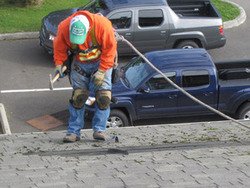Washington State Construction Codes Update
/June 2013
by Bryce Given
The 2012 International Code Council (ICC) Model Building codes for commercial and residential construction projects have been reviewed, revised and adopted by the State Building Code Council in Washington. These Codes are revised every three years following the ICC 3-year revision cycle. The select codes currently in use in most Washington jurisdictions are the 2009 International Building Code (IBC) and the International Residential Code (IRC).
Washington's State Building Code Council (SBCC), along with its Technical Advisory Group, reviews the ICC model codes, holds public hearings, and makes the final determination on acceptance. Public hearings for amending the 2009 Codes to the 2012 version have already occurred and the SBCC has completed its adoption process. The 2012 Codes will be effective July 1, 2013.
Following is a list of some of the new revisions found in the 2012 WA State Building Code.
R302, Fire resistant construction requires fire protection at five-foot separation from lot lines.
R303.4, Requires minimum performance for whole house ventilation systems.
R315, Carbon monoxide alarms, detection and installation requirements revisions.
R326, Amends provisions for adult family homes to reference standards for accessible design.
R501.3, New regulations for fire protection of floors.
R507.2.2 & 507.2.3, Allows alternate methods of deck ledger connections.
R612, Exempts small business manufacturers from required testing of windows and glass doors.
Be prepared for these revisions and more. Adopted versions of the 2012 codes are posted on the website at https://fortress.wa.gov/ga/apps/sbcc/Page.aspx?nid=14


